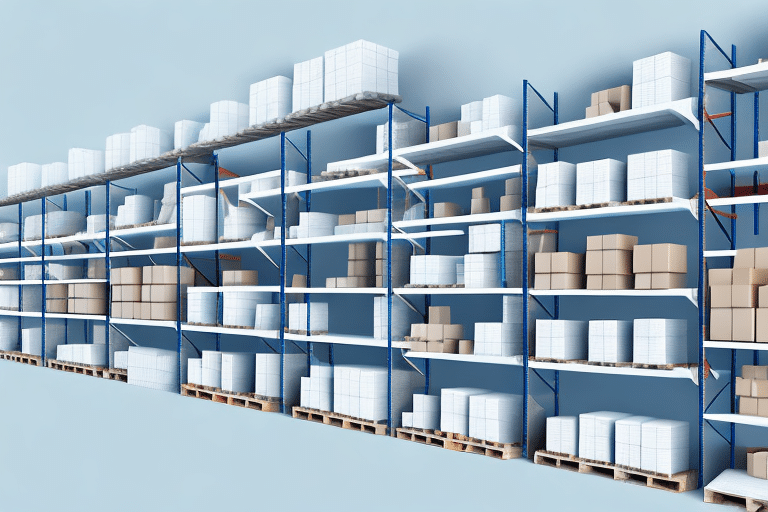What Is Kitting in Warehousing? An Overview of the Process
Kitting is the process of bundling together individual items or materials into a single unit, which is then used in a larger product or assembly. This process is particularly beneficial in warehousing, as it can significantly accelerate production lines and enhance inventory management efficiency. This article provides an in-depth overview of the kitting process in warehousing, exploring its benefits, challenges, necessary tools, and best practices for successful implementation.
The Benefits of Kitting in Warehousing
One of the primary benefits of kitting in warehousing is the streamlining of the production process. By bundling individual items or materials, workers save time that would otherwise be spent searching for specific parts. This improvement enhances efficiency and reduces the time required to produce a product. Additionally, pre-packaged kitted items are easier to handle and transport, lessening the risk of damage or loss. Kitting also contributes to waste reduction by ensuring that only the necessary materials are used in production, eliminating the need to purchase or store excess inventory that may later become obsolete.
Another advantage of kitting in warehousing is enhanced inventory management. Bundling items that are frequently used together simplifies tracking inventory levels and reordering supplies as needed, helping to prevent stockouts and ensuring continuous production. According to a Statista report, effective inventory management systems can reduce holding costs by up to 25%. Additionally, kitting reduces storage space requirements, as pre-packaged items occupy less room than individual components, freeing up valuable warehouse space for other uses such as additional production lines or storage for finished products.
Types of Kitting Methods in Warehousing
Various kitting methods are employed in warehouses, each with unique advantages and disadvantages:
- Pulled Kitting: Components are assembled and packed into a kit as orders come in, allowing flexibility in responding to customer demands. However, frequent changes in order quantities or components can lead to inefficiencies.
- Batch Kitting: Multiple kits are assembled simultaneously based on a predetermined schedule or order quantities, offering time and resource efficiency. However, this method might be less responsive to sudden changes in demand.
- Advanced Kitting: Utilizing data analysis and forecasting, kits are created in advance of orders based on historical demand patterns or predicted customer orders. This method can reduce lead times and improve inventory management but requires significant investment in technology and data analysis capabilities.
The choice of kitting method depends on the specific needs and goals of the warehouse and its customers.
Implementing Kitting: Tools, Challenges, and Strategies
Essential Tools and Equipment
Successful kitting requires specific tools and equipment, which may vary based on warehouse needs. Essential items include:
- Labeling Systems: For identifying and tracking finished kits.
- Packaging Materials: To protect and hold components securely.
- Proper Storage Facilities: To store finished kits efficiently.
- Automated Systems: Such as robotics or conveyor systems, which can enhance the kitting process by increasing speed and accuracy.
Additionally, a well-trained and efficient team is crucial for handling the kitting process. Team members should be knowledgeable about the components used and skilled in assembling and packaging kits. Proper training and ongoing education ensure smooth and efficient kitting, reducing the risk of errors and delays.
Common Challenges
Implementing a kitting process in warehousing presents several challenges, including:
- Additional Storage Space: Kitted components may require more or differently managed space.
- Inventory Management: Accurate tracking of inventory levels is essential to prevent stockouts and overstocking.
- Communication Efficiency: Effective communication between team members is necessary to coordinate the kitting process.
- Equipment and Training Investments: New equipment and staff training may be required to handle the kitting process effectively.
- Proper Labeling and Identification: Essential to prevent confusion, especially with similar or identical components.
- Workflow Integration: Integrating kitting into existing workflows may require process adjustments and staff retraining.
Strategies for Streamlining
To streamline the kitting process and address the challenges outlined above, warehouses can adopt several strategies:
- Establish Clear Guidelines and SOPs: Standard operating procedures ensure consistency and minimize errors.
- Implement Automated Systems: Robotics and barcode scanners can reduce time and labor required for kitting.
- Regular Audits: Auditing the kitting process helps identify areas for improvement and ensures smooth operations.
- Optimize Warehouse Layout: Grouping frequently used items together and placing them near the kitting area can minimize travel distance for workers.
- Adopt a Just-In-Time Inventory System: Reducing inventory levels that need to be stored and kitted can streamline the process.
- Invest in Employee Training: Training workers on automated systems and cross-training them for multiple tasks can enhance efficiency and productivity.
Managing Inventory During the Kitting Process
Effective inventory management is critical during the kitting process. Best practices include:
- Maintain Accurate Inventory Records: Up-to-date records prevent errors and stockouts.
- Track Usage Rates of Individual Components: Understanding usage helps in forecasting and reorder planning.
- Create Safety Stock Levels: Safety stocks mitigate the risk of running out of essential components.
- Partner with Suppliers and Share Demand Data: Collaborating with suppliers ensures adequate supplies of necessary components.
- Implement a First-In, First-Out (FIFO) System: Ensuring older components are used before newer ones reduces the risk of expiration or obsolescence. Learn more about FIFO.
- Use Barcoding or RFID Technology: These technologies allow real-time tracking of inventory, enhancing accuracy and efficiency.
- Regularly Review and Analyze Inventory Data: Data analytics tools can optimize inventory management processes, reducing waste and inefficiencies.
Leveraging Technology and Software Solutions
Selecting appropriate software solutions is essential for successful kitting implementation. Consider the following factors:
- Functionality: Ensure the software meets the specific needs of your kitting process.
- Ease of Use: User-friendly interfaces reduce training time and increase adoption rates.
- Integration with Existing Systems: Compatibility with current systems ensures seamless operations.
- Vendor Specialization: Choose vendors that specialize in your industry or offer customizable features tailored to your requirements.
- Scalability: The software should accommodate future growth and evolving needs.
By carefully evaluating software options against these criteria, warehouses can select solutions that enhance the efficiency and effectiveness of their kitting processes.
Measuring Success: KPIs for Kitting Processes
Measuring the success of the kitting process is crucial for continuous improvement. Key performance indicators (KPIs) include:
- Production Time: The time it takes to produce a finished product.
- Kitting Accuracy: The precision of the kitting process in assembling correct components.
- Material Costs: The cost of materials required for the kitting process.
- Inventory Turnover: The rate at which inventory is used and replenished.
- Error Rates: Frequency of errors in the kitting process.
- Order Fulfillment Time: The time taken to fulfill orders from kitting to shipping.
According to Investopedia, effectively measuring these KPIs can lead to a 15-20% improvement in operational efficiency. Regularly measuring and analyzing these KPIs enables warehouse managers to identify improvement areas and refine their kitting processes accordingly.
Case Studies and Future Trends in Kitting
Successful Implementations
Examining successful kitting implementations provides valuable insights and inspiration. For instance, a warehouse transitioning from a manual to an automated kitting process reported significant reductions in production time and labor costs, as documented in the Forbes article on automation in warehousing.
Another case study highlights a company that utilized data-driven advanced kitting, resulting in improved inventory management and reduced waste. These examples illustrate the tangible benefits of adopting effective kitting processes.
Future Trends and Innovations
Staying abreast of future trends and innovations is essential for maintaining a competitive edge in warehousing and kitting. Emerging trends include:
- Advancements in Automation and Robotics: Continued integration of robotics can further streamline the kitting process, increasing speed and reducing human error.
- Artificial Intelligence (AI): AI can enhance forecasting accuracy, optimize inventory levels, and personalize kitting based on customer preferences.
- Sustainable Practices: The adoption of eco-friendly packaging materials and waste reduction techniques in kitting aligns with broader sustainability goals.
- Internet of Things (IoT): IoT devices can provide real-time data on inventory levels and kit assembly progress, enhancing transparency and control.
According to a report by McKinsey & Company, these technologies are expected to revolutionize warehouse operations by 2025, offering new opportunities to optimize and innovate kitting processes.
Conclusion
In summary, kitting is a vital process for optimizing production and enhancing efficiency in warehousing operations. Successfully implementing kitting requires careful consideration of its benefits, challenges, and best practices. By selecting appropriate equipment, establishing clear guidelines, and consistently measuring KPIs, warehouses can adopt a kitting process tailored to their specific needs and objectives, ultimately driving improved efficiency and productivity.




















